Kevin Hale: the subtleties of working with user experience (part 1)
- Transfer
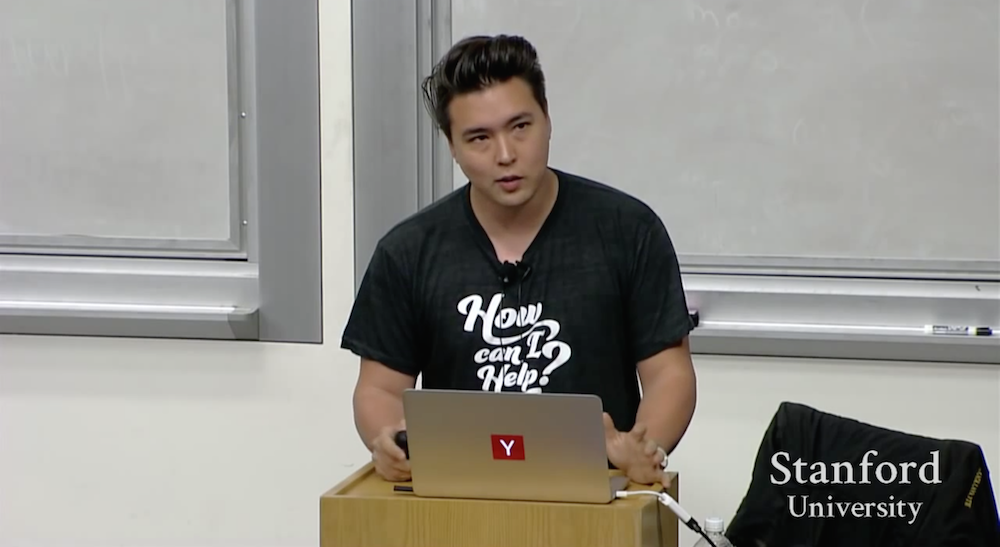
Stanford course CS183B: How to start a startup . Started in 2012 under the leadership of Peter Thiel. In the fall of 2014, a new series of lectures by leading entrepreneurs and experts of Y Combinator took place:
Second part of the course
First part of the course
- Sam Altman and Dustin Moskowitz: How and why to create a startup?
- Sam Altman: How to build a startup team and culture?
- Paul Graham: An Illogical Startup ;
- Adora Chung: Product and honesty curve ;
- Adora Chyung: Rapid startup growth ;
- Peter Thiel: Competition is the lot of the losers ;
- Peter Thiel: How to build a monopoly?
- Alex Schulz: Introduction to growth hacking [ 1 , 2 , 3 ];
- Kevin Hale: Subtleties in working with user experience [ 1 , 2 ];
- Stanley Tang and Walker Williams: Start Small ;
- Justin Kahn: How to work with specialized media?
- Andressen, Conway and Conrad: What the investor needs ;
- Andressen, Conway and Conrad: Seed Investment ;
- Andressen, Conway and Conrad: How to work with an investor ;
- Brian Chesky and Alfred Lin: What is the secret of company culture?
- Ben Silberman and the Collison Brothers: Nontrivial Aspects of Teamwork [ 1 , 2 ];
- Aaron Levy: B2B Product Development ;
- Reed Hoffman: About Leadership and Leaders ;
- Reed Hoffman: On Leaders and Their Qualities ;
- Keith Rabois: Project Management ;
- Keith Rabois: Startup Development ;
- Ben Horowitz: Dismissals, promotions and transfers ;
- Ben Horowitz: Career Tips, Westing and Options ;
- Emmett Shire: How to conduct interviews with users;
- Emmett Shire: How Twitch talks to users ;
- Hossein Rahman: How hardware products are designed at Jawbone;
- Hossein Rahman: The Design Process at Jawbone.
Kevin Hale: So, when I talk about creating products that users love, I mean, in particular, “How do we produce products that users will care about, which they sincerely want to see successful, as is the case with goods that we produce, as is the case with the companies behind them? ” We will now analyze a lot of information; try not to make too many recordings - try to listen more.
In my Twitter account, I will post a link to the slides, and by going through it, you can leave comments on the slides [ approx. perev. - all this you can find on the link to the source of translation ]. So ask questions, and if we do not get to them, then I will answer them after the lecture.
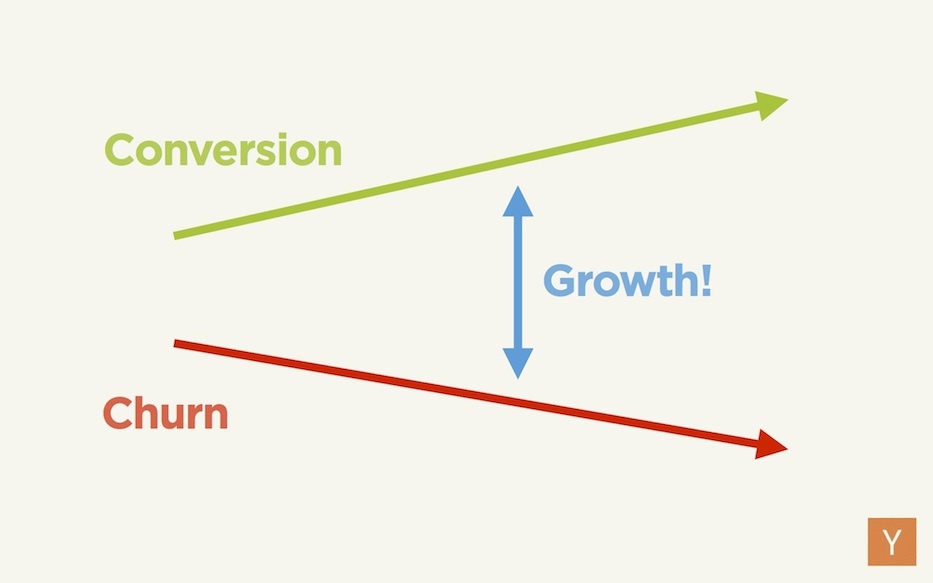
Well, friends, you've heard a lot about growth over the past few weeks, but it seems to me that growth is pretty simple. This is the interaction of two concepts or variables: conversion values [ eng. conversion - a coefficient that shows the number of website visitors who later became buyers ] and "turnover" [ eng. churn - coefficient that shows the number of customers who refused the service ]. The gap between them to a large extent reflects how fast you are developing.
Most, especially business people, try to consider this interaction from a purely mathematical, calculated point of view. Today I want to talk about this from the point of view of relations with people, because when you start talking with your users in a startup, your relations at the early stage are pretty close; and therefore, I believe that this is a new look at how we create our products. We will consider many examples on this topic and how to implement them.
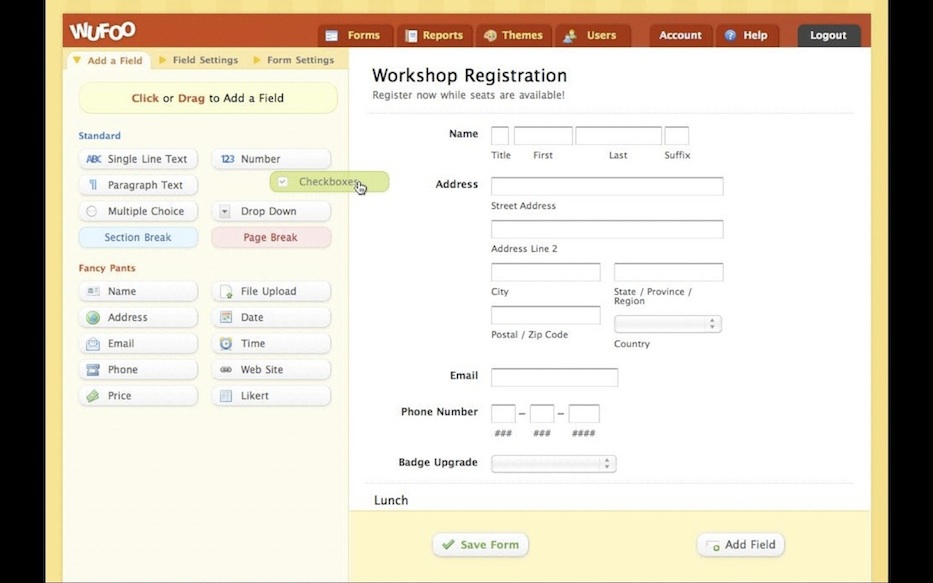
My philosophy related to everything that I talk about startups is that the best way to earn a billion dollars is to focus on the values that help you get that very first dollar, to attract that very first user. If you learn this, everything else will work out by itself. This, so to speak, is a matter of faith. I became a partner at YC as a graduate of the program. I took part in it in the winter of 2006 (it was just the second program) and created a product called Wufoo .
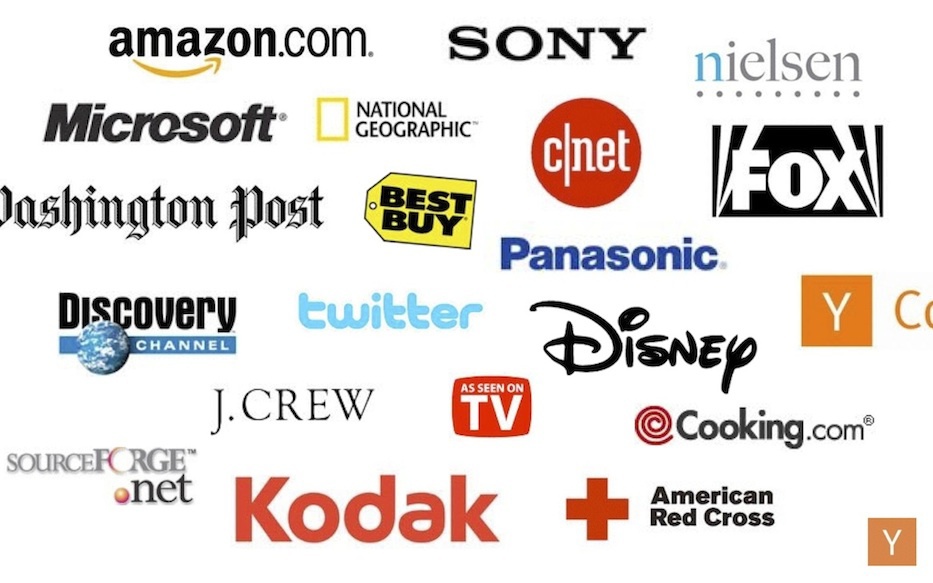
Wufoo is a form builder that helps you create feedback forms, online surveys, and simple forms of payment. In general, this is a DBMS application that looks like Fisher-Price was designing it. However, it’s interesting that since the application was easy to use, we had clients in every market and in every area that could be imagined, including most of the Fortune 500 companies.
I headed the business for five years and later in In 2011, Survey Monkey acquired us. At that time, we were considered a very interesting acquisition. Then we were only a team of 10 people, and while we were receiving financing here in Silicon Valley, the company was managed from Florida.

We did not have an office, everyone worked remotely, and we were quite different from other companies. Here [ on the slide above ], each dot represents a startup that has gone public IPO . Initial public offering - the initial public offering ] or became someone else’s acquisition, the point at the distance to the left is us. The amount of financing received is indicated below, and the vertical axis is the current value of the company. As you can see, the average startup collects $ 25 million in investments and returns about 676% to investors.
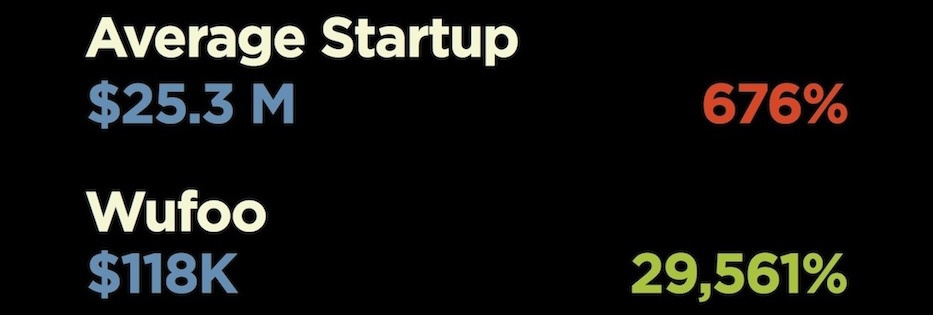
We at Wufoo raised $ 118,000, with a return on investment of about 29,561%.
In this regard, many ask what distinguishes Wufoo from other companies, or how our management of a company differs. We paid a lot of attention to the product. We were not interested in developing an application that people would just like to use, which would remind you to work in the office, since, in fact, this is just working with a database.
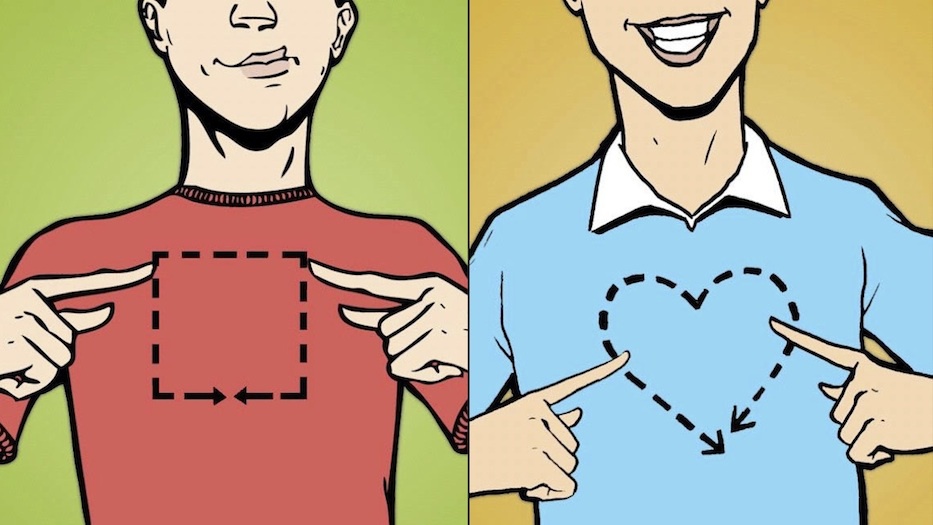
We wanted to get a product that people would love, to which they would like to be involved, and we are just fans of our approach to this idea and almost raised it to the degree of a scientific approach. Therefore, we said to ourselves: “Regarding start-ups, from the point of view of creating products that users will love, the following is interesting: love and other sincere feelings are things that are very difficult for us to achieve in real life. And in a startup, we are forced to achieve them on a larger scale. ” And we decided to start with the question: “How are relationships built in the real world, and how can this knowledge be applied in doing business and creating a product?”

We will consider two such metaphors: attracting new users, as if you were trying to meet them, and current users, as if you were in a happy marriage with them. When it comes to dating, much of what we found is related to first impressions. Each of you often talks about the beginning of a new stage in your relationship. You tell others about the first kiss, how you met, how you made an offer. This is what we are talking about again and again, these are stories about relationships that are passed from mouth to mouth.
The situation is similar with companies. Humans are creatures that constantly build relationships. We cannot but create and animate what we interact with over and over again. Whether it's the cars we drive, the clothes we wear, or the tools and apps we use; in the end, we attribute their characteristics to them, note their individuality, and we expect these things to work in a certain way - that is how we interact with them.

First impressions are important at the beginning of a relationship, because we talk about them again and again, right? There is something special about how we relate to the stories about the start of our relationship. I will give an example. If you are with someone on a first date and you have a good time at dinner, but notice how he / she picks his nose, you probably will not go on the next date. But if you are married to someone about 20-30 years old and see how he / she, lounging in an armchair, “looking for gold”, you will not run to call your lawyer (you understand what I mean) and you will not say: We have a problem here, you need to prepare papers for divorce. ” You shrug and say, “But he has a golden heart.”
Therefore, this initial interaction is characterized by the fact that the ability not to go further is extremely high. In working with applications and in most online products, the first impressions are usually obvious: you can notice what things many companies pay close attention to in terms of what (standard) tasks their marketing specialists work on.
Although specialists who really know the product well, they find many other things that can be remembered: the first letter that came to your mail; what happens when you register; links; advertising; first interaction with technical support. All these are opportunities to hook the client.
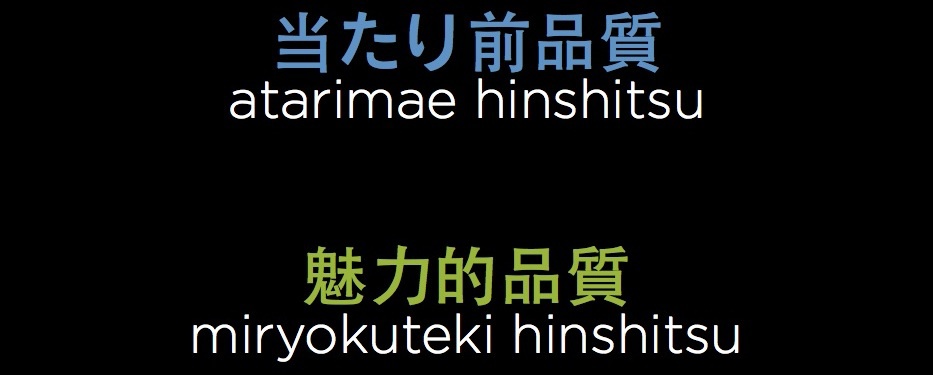
So how are we going to make a first impression? In fact, we borrowed the idea from the Japanese. In general, they have two concepts for describing the quality of the finished product. These two concepts of quality are atarimae hinshitsu and miryokuteki hinshitsu. The first means inherent qualities, that is, in essence, functionality. The second means “attractive” quality. Take, for example, a pen. She has miryokuteki, if the weight of the pen is used, how ink flows out of it, how people perceive what is written with this pen, is pleasant both for those who use the pen and for everyone who perceives the result, taking product evaluation to a new level. Let's start with a few examples.
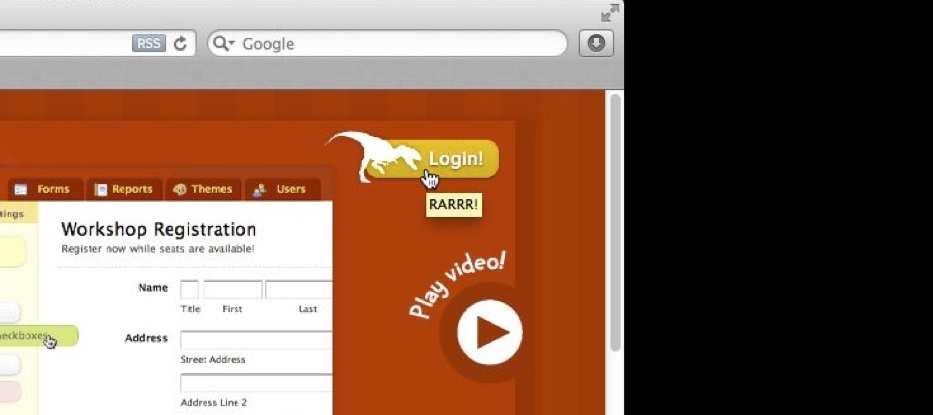
This is a link to register with Wufoo, and there is a dinosaur on it, and I think it’s cool! It has an additional function: when you hover over a link, a tooltip appears that does not contain data on how to register, or what will happen next - it simply says: “RARRR!” At an early stage of working with the usability of the site, we noticed that this effect makes people smile, without any labor, and absolutely all.
I think very often when we evaluate products, we don’t think: “And what emotions appear on the faces of those who interact with this?”

Vimeo's start page seemed especially attractive to me. She makes it clear that when you are going to go on a trip with them, it will be unusual - this is their style. If you run a search for the word "fart", when you scroll up and down, sounds appear, as if someone was farting. This is something new, as if the site is interacting with you, a little magic, and this is slightly unusual. I want to share this.
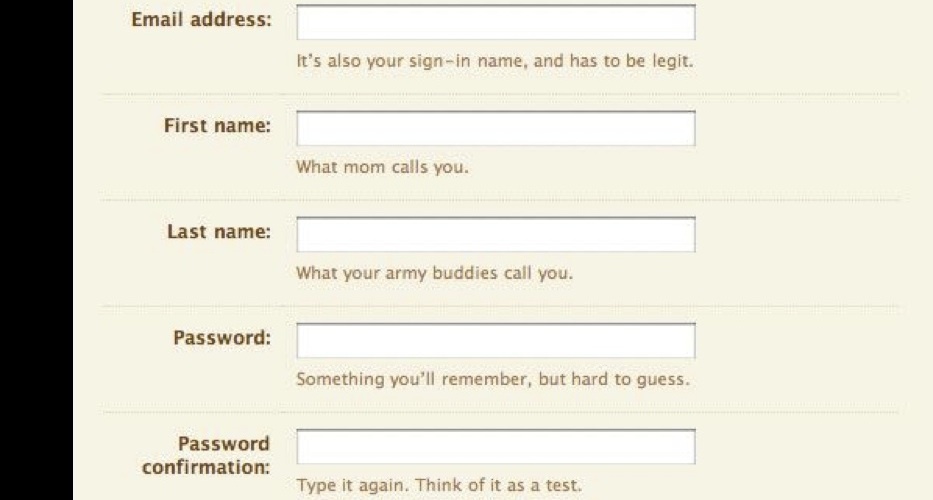
It is not necessary to formulate this interaction through design. This is a registration form on Cork'd, a project conceived as a social network for wine lovers. It says: “The email address is also your name during registration, and it must be real. The name is how your mother calls you. Last name is what your colleagues call you. A password is something that you yourself will remember, but others will not be able to pick up. Confirm password - enter it again, consider it to be just a test. ”It sounds [ in English ] literally like poetry. And filling out the form, you say to yourself: “Well, I like the people who work on this, I will like it here.”

Now look at the Yahoo registration form: what does this form say about the service, what will be its “face”? I’m also upset that any Yahoo product or service works with the same registration form.

I believe that Flickr came up with one of the best calls to action. It sounds like this: “Come to us!”.
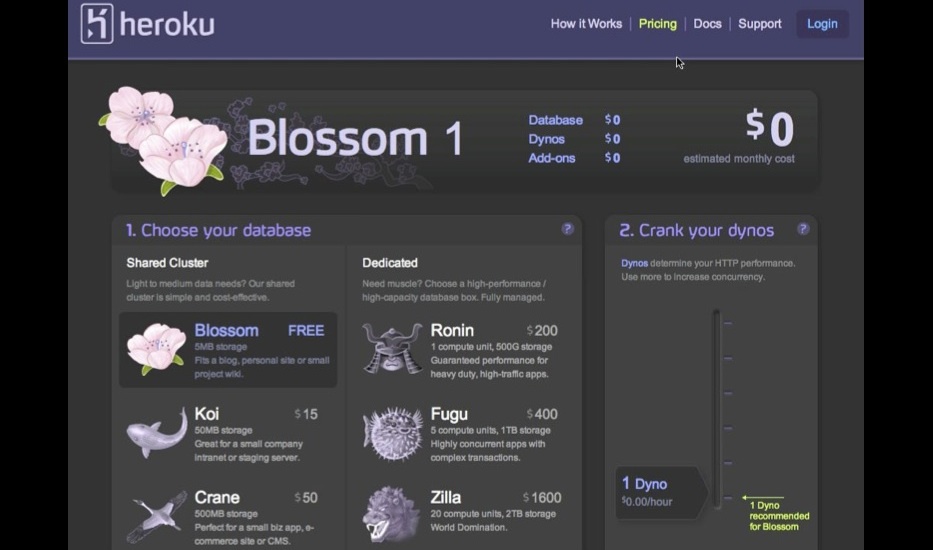
This is the Heroku registration page. I think this is one of the latest versions. Amazingly (and you’re starting to get used to it) the following: scaling backend services here is no more difficult than dragging the sliders back and forth. Adjusting zooming on the Heroku website is really easy.

Here is a site for those who study computer science; I think you will like it. This is Chocolat, a code editor. They have only one call to action: when time runs out, everything remains in place, except that the font changes to Comic Sans: they seem to say: “Hey, we know who our users are and who our customers are. These are people who care about it. ”
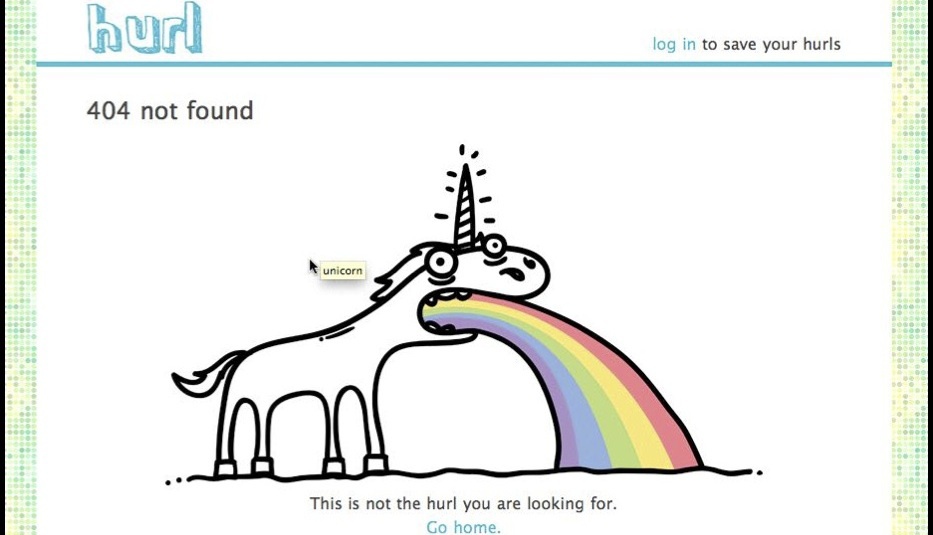
This is Hurl, a website for testing HTTP requests: sometimes the places where errors appear are opportunities to form a first impression. If you stumble upon a 404 error, you will see a unicorn that is sick of a rainbow.
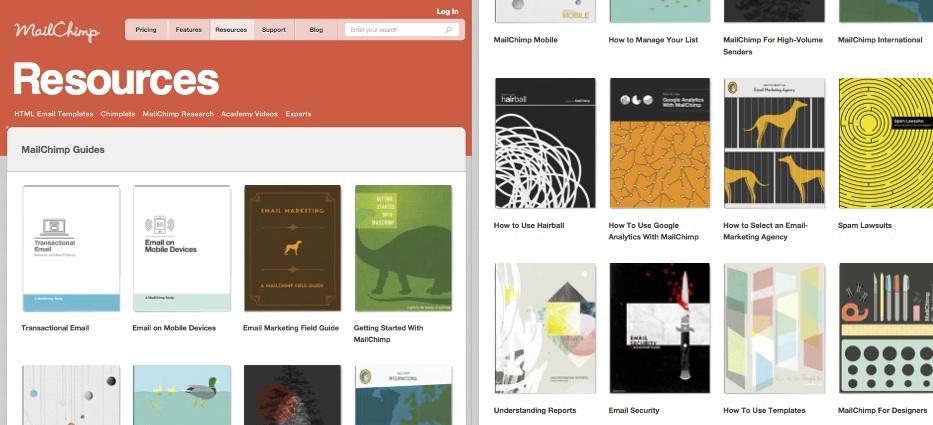
Often we create pretty colorful marketing materials, but when you need to draw up documentation, we save on design decisions. This happens very, very often. MailChimp is a company that understands this. They redesigned the reference guides to look like magazine covers, and suddenly - in fact after this innovation - the readership expanded, and the number of requests to the support service regarding mailing optimization decreased.
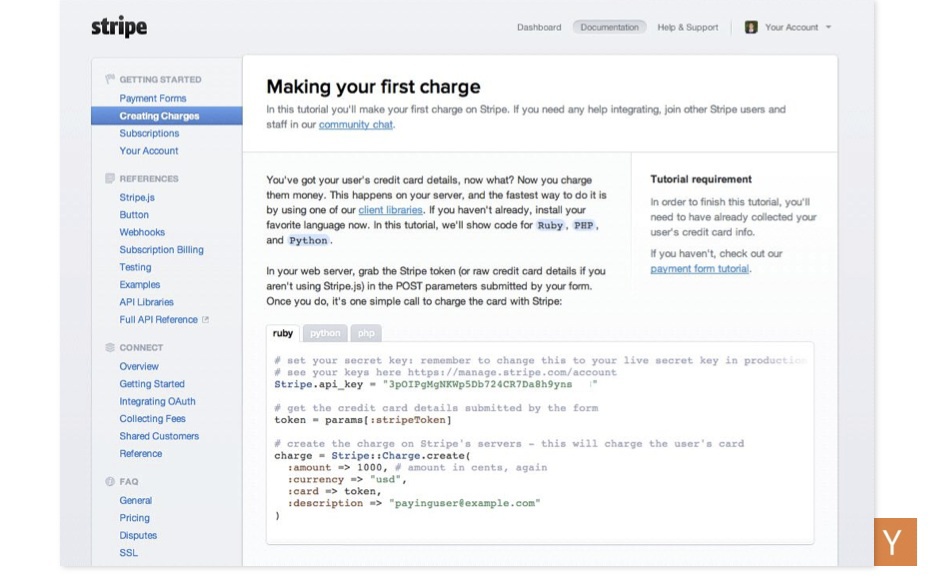
Speaking of documentation, Stripe, an API-based business, does not have UX. Generally speaking, UX is just documentation, but even in documentation there are opportunities to attract and surprise users. What I like about Stripe is their excellent examples, however, when you go into the application, the real headache for most people is extracting authorization data and keys for your API. We were shocked by what they said about this: “When you go into the application, we automatically put your authorization data in examples, so you need to copy and paste them into the form only once, instead of trying to remember them” .
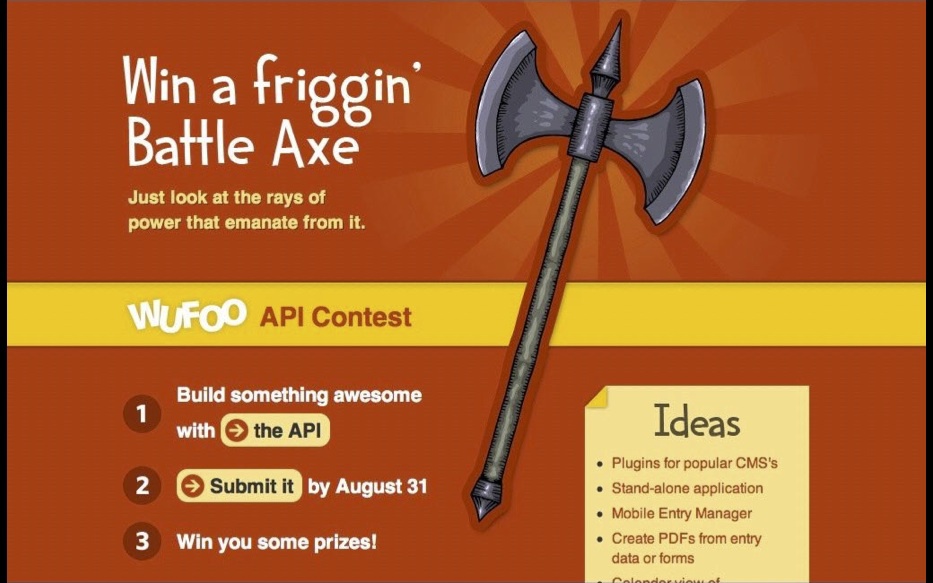
When Wufoo was about to release the third version of the API, we decided: "Well, in the end it is good enough, and we would like people to create projects based on it." We tried to figure out how to arrange its launch so that it expresses our personality, because many usually hold something like a competition for API-based application developers and give out iPads and iPhones to the winners; it makes you look like others.
Here is one strange thing about our company: our founders are simply obsessed with the Middle Ages, and we all go to the Middle Ages every year on the anniversary of the founding of the company. So we told ourselves to do something in this style. We contacted the guys from armor.com and asked: “Can you make a battle ax to order?” We said: if you win the programming competition, then get it.
As a result, people wanted to tell others about it. They wanted to tell them that they were participating in our competition in order to inform others: “I program for weapons.” The great thing is that in the end we got more than 25 applications, the quality and quantity of which we could not afford with our budget and lack of time. We now have an iPhone app, an Android app, a Wordpress plugin, and all we did was change how people perceived the history of getting to know one of our services.
In conclusion, I’ll say that you should just subscribe to Little Big Details . Generally speaking, this resource contains a huge number of screenshots of software, which show that in these programs everything is arranged as it should, and their creators are honest with users and customers.

Regarding long-term relationships or marriage, the only research we eventually managed to read was John Gottman's material. He took part in the broadcast of "This American Life", mentioned in the books of Malcolm Gladwell, etc. He studies marriage, working in Seattle, and has a special talent - he can watch a 15-minute video with a couple who quarrel for some reason and predict with an accuracy of 85% whether the couple will stay together or divorce for four years.
If the duration of the video increases to an hour, and he asks them to discuss their hopes and dreams, the accuracy of the forecast increases to 94%. The same video was shown to experts in the field of marriage, couples in successful marriage, sociologists, psychiatrists, priests, etc. They cannot even predict by chance whether spouses will stay together or not.
John Gottman understands something very important about how relationships develop in the long run - how we quarrel in the short run can determine the appearance of the whole system. One striking fact that he discovered is not that a successful couple does not quarrel at all; it turns out that everyone quarrels, and we all argue about the same things: money, children, sex, time and other things (for “other things” we can include, for example, jealousy and relatives on the part of the husband / wife).
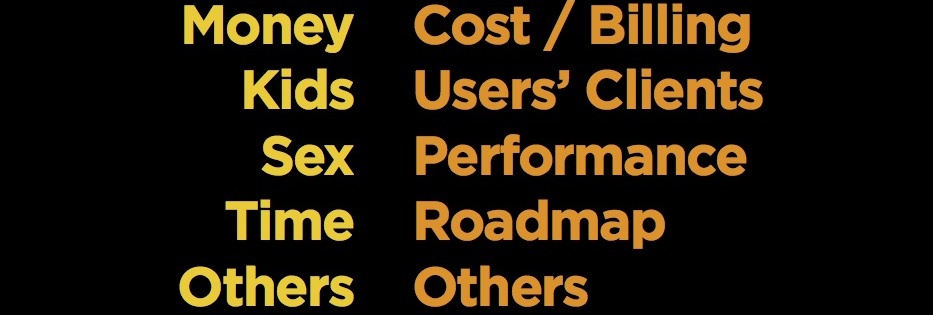
To make it clearer, you can correlate each of these points with the problems that we face in the technical support when creating a new product: Money is a problem such as "too expensive", or "I have problems with credit cards." Children are the customers of our users. Sex is productivity, how long you work, and how fast everything happens. Other things - I talked about jealousy and relatives, so in this case it is competition and affiliate programs, all the strange things that are happening in the company and what they will write to you about.
And the reason why I like to talk about it precisely from the point of view of technical support is that when studying the conversion funnel, technical support is what happens between each of the steps; this is the reason why people do not move to a new level of the funnel; what prevents conversion.
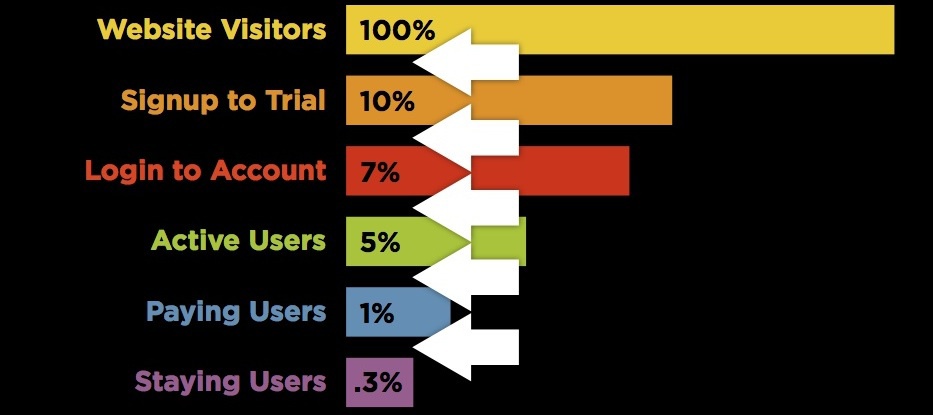
And while we were reflecting on all these ideas and developing the company, we realized that, as a rule, creating a new business or development team is fraught with big problems. They are associated with the lack of cyclic feedback. In ordinary life, people get divorced due to the consequences of their actions. This is the result of the natural process of creating companies, in particular, technical co-founders.
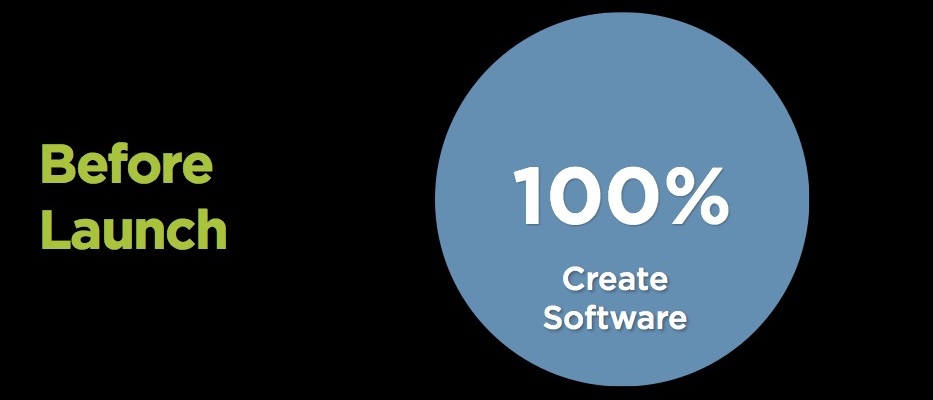
Before product launches, there is time for bliss, Nirvana, and opportunity. Everything you do - you do it right. Each line written by your hand (which seems to you to be “the hand of God”), and any code written by you, seem perfect; you think it's brilliant.
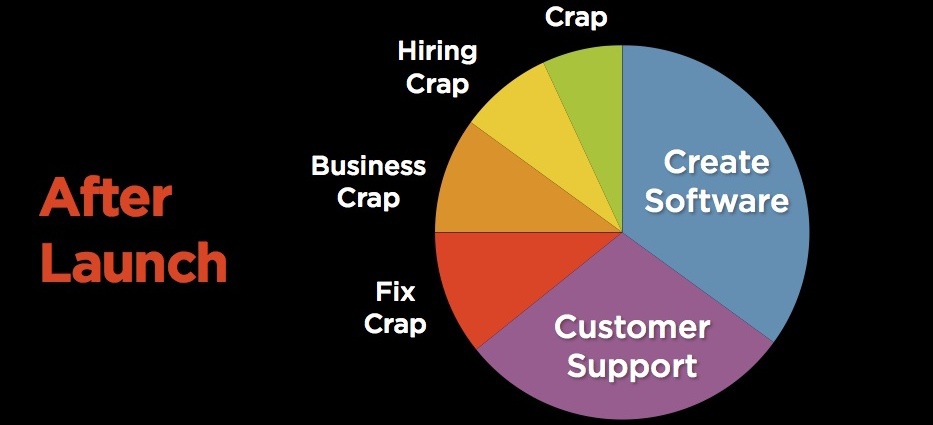
After launching the product, you enter the real world, and all these new tasks appear that need to be solved; everything to deal with. Technical co-founders usually try to return to the initial stage, and we very often see how the company puts aside everything that makes a startup a real business, and shift this work to others. It seems to us that these tasks are secondary, that we have other people in the company who can deal with them.

Personally, we wanted to understand how to change software development in such a way as to instill in the end result some values that we rarely talk about, such as responsibility, discipline, moderation and modesty. We call it Development through Support . Support Driven Development, SDD ]. This is a method of developing high-quality software, and it is extremely simple: there is no need to dirty a pile of pieces of paper for notes. All that is required is for everyone to provide technical support. At the output, you get well-established feedback. Those who develop software are also involved in support, and as a result, you get all the relevant benefits.
One of them is the formation of responsibility for support from developers and designers. When people develop something, they can provide better support. And we are not the first to think about it. Paul English has done a lot to support this idea at Kayak. He set up a hotline for calls to support in the middle of the floor where the engineers worked, and they simply received these calls.
People often asked him: “Why would you pay engineers $ 120,000 or more to do the work for which you can only pay part of the other employees.” He answered: “You know, after the second or third call, when the engineer encounters the same problem, he stops doing what he did, fixes the bug, and calls with such a problem stop.” This is a kind of elegant solution that provides quality control.

In addition, John Gottman talks about the reason why we often part with each other, and which arises from four main sources. These are warning signs. He calls them the Four Horsemen [ cf. Four Horsemen of the Apocalypse ]: criticism, contempt, defensive behavior and blocking.
Criticism, generally speaking, arises when people try to focus not on a given problem, but on more general ones, constantly repeating “You never listen to users” or “You never think about us”. Contempt occurs when someone intentionally tries to insult another. Protective behavior is a disclaimer, or a situation where a person is trying to come up with an excuse for his actions. Blocking is simply detachment. Blocking, according to John Gottman, is one of the worst things that can happen in a relationship.
Often we do not care about such things as criticism and contempt when providing technical support. Protective behavior: we constantly observe it, especially as the company grows. But blocking: I constantly see how it happens in startups. You receive a sea of incoming calls to the support service and just think: "I do not need to react in any way, I do not need to answer." Do not return to these issues - the worst thing you can do, and, for sure, this is one of the main reasons for the "flow" in the early stages of startup development.

This is how support worked in Wufoo. At the time of the takeover, we had 500,000 users in the system, 5 million people used Wufoo forms and reports, whether they knew it or not, but all these people received support from the very 10 people: usually every day they were appointed to provide support on any issue one man.
As a result, there were about 400 calls per week, which is about 800 emails. From 9 a.m. to 9 p.m., the waiting time for a response by the user took from 7 to 12 minutes, from 9 p.m. to midnight it took an hour, and on weekends the answer took no longer than 24 hours. We worked in this mode and as we scaled.
What many people talk about and often forget to say about Airbnb is their interesting move when they arrived in New York and offered to take professional photographs of the interiors. The founders of the company walked and actually took pictures of the rooms, helped the owners better pass them, taking into account the conversion. Most people do not realize this: at the beginning of the formation of Airbnb, I very often saw Joe in headphones with a microphone, as he provided customers with non-stop telephone support.
[ Second part of the translation of Kevin’s lecture ]
